Who Killed Harvey Milk? How the Politician Risked His Life Fighting for LGBTQ+ Rights
Harvey Milk's legacy is still celebrated today
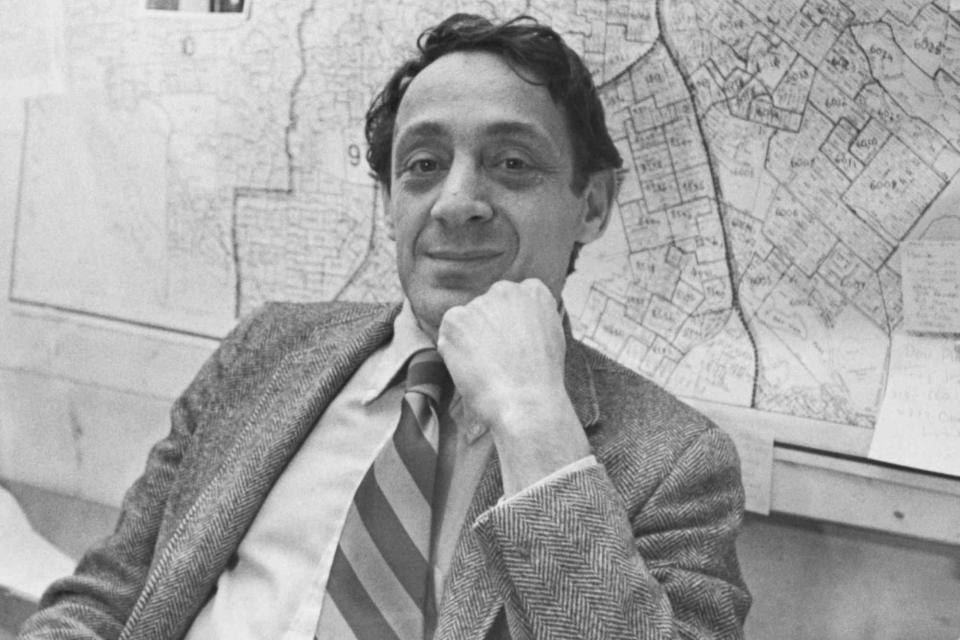
Bettmann
Member of the San Francisco Board of Supervisors Harvey Milk on December 4, 1977.Harvey Milk made history as the first openly gay elected official in California, and his efforts to advance LGTBQ+ rights impacted the movement, including his death.
Although he grew up in New York, Milk made his way into politics in San Francisco. He helped pass the first gay protection ordinance in the city, working on the Board of Supervisors alongside political figures like Dianne Feinstein.
Milk became a fixture in the San Francisco community, speaking out on equality opportunities for all city residents. He introduced an anti-discrimination bill and worked on providing working mothers with daycare centers, transforming the city's military facilities into low-cost housing and reforming the tax code to reuse deserted warehouses and factories, amongst other important campaigns.
While he was beloved in the community, Milk knew he was taking a risk by being out openly as a gay man in politics. He recorded a message on tape as his final last words in case he was assassinated. Though the gay rights movement was on the rise, homophobia was serious.
In the recording, he said, "All I ask is for the movement to continue, and if a bullet should enter my brain, let that bullet destroy every closet door."
Sadly, Milk was killed in November 1978 at the age of 48 by a gunman, per The New York Times. Although the politician was tragically murdered, his memory and mission live on.
Here's everything to know about Harvey Milk's death and legacy.
Who was Harvey Milk?
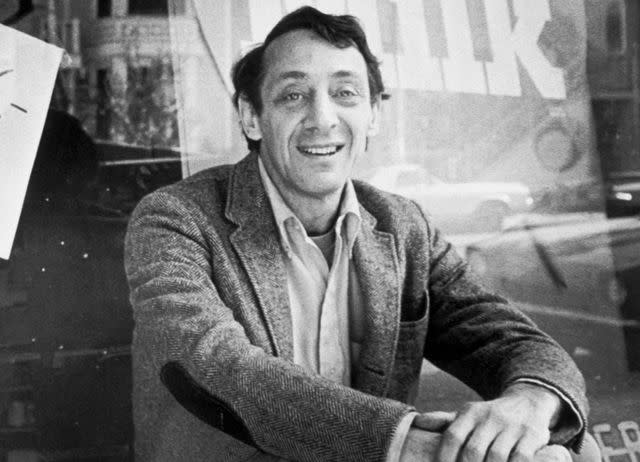
Bettmann
Harvey Milk sits outside his camera shop in San Francisco, November 9, 1977.Milk was born on May 22, 1930, and grew up in the small town of Woodmere, N.Y., with his parents, William and Minerva, who were Lithuanian, and his brother, Robert, per the Milk Foundation.
He attended the New York State College for Teachers (now State University of New York) in Albany, N.Y., where he studied math and history and contributed to the school's paper.
Following his graduation in 1951, Milk enlisted in the Navy and worked as a diving instructor, but four years later, he was forced to resign after being questioned about his sexuality.
Upon his return to New York, he held various positions, including public school teacher, stock analyst and associate producer on Broadway. However, he eventually left the Big Apple again and entered politics after moving to San Francisco.
In 1972, after Milk relocated to California, he opened a camera store in the historic Castro neighborhood. The Castro would become the epicenter of the city's LGBTQ+ community, and Milk was at the heart of it.
After living in the location for a year, he announced his candidacy for the San Francisco Board of Supervisors. He lost his first race but continued to work in local politics, eventually winning a position on the Board of Supervisors with district elections in 1977 and was sworn into office in January 1978.
Milk’s fight for equality, including his work to help defeat Proposition 6, which would require LGBTQ+ teachers to be fired for their sexuality, led to an increase in attendance at pride parades from the city to Los Angeles.
He made an impact with his eloquent speeches and activism within his community. "This is not my victory, it’s yours. If a gay man can win, it proves that there is hope for all minorities who are willing to fight," Milk said after the win.
How did Harvey Milk die?
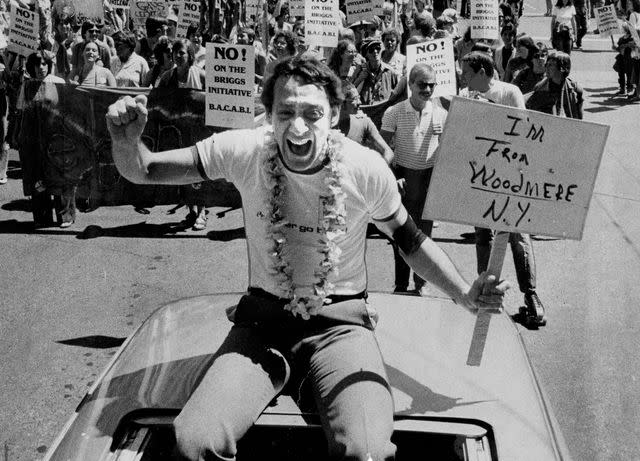
Terry Schmitt/San Francisco Chronicle/Getty
Harvey Milk at the Gay Pride Parade in San Francisco on June 23, 1978.Milk was popular within the San Francisco queer community, but being out posed risks.
While working with San Francisco Mayor George Moscone on initiatives supporting the LGTBQ+ community and people of color, Milk encountered other employees in City Hall, including Dan White, who was also on the Board of Supervisors.
According to NPR, White was a Vietnam veteran who later became a policeman and fireman. In 1977, he was elected to represent a blue-collar district, but within a year, he resigned, citing difficulty earning a living to support his family.
Shortly after, though, White changed his mind about his job when local businesses pointed out that they would be losing a conservative voice, and he went back to City Hall to try to resume his role. The New York Times reported that White was intent on being reappointed because Moscone was only an hour away from naming a successor.
But it didn't go as planned: Although Moscone considered working with White again, he ultimately said no, and that's when White shot the mayor, then walked down the hall and did the same to Milk.
According to the Milk Foundation, White’s crime was calculated. He snuck in through an open basement window, able to avoid metal detectors and entered the building with the weapon.
When did Harvey Milk die?

Bettmann
Harvey Milk and San Francisco Mayor George Moscone in April 1978.Harvey Milk died on Nov. 27, 1978.
Where did Harvey Milk die?
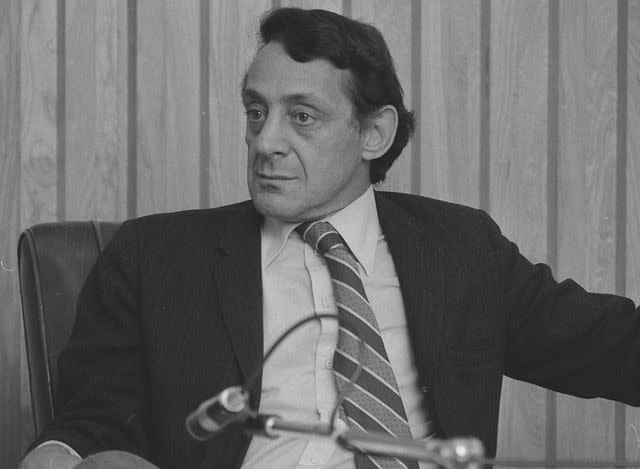
Jerry Telfer/San Francisco Chronicle/Getty
Harvey Milk on August 2, 1978.Milk was assassinated in his San Francisco City Hall office.
Feinstein, the late California senator, was serving as the president of the Board of Supervisors and was nearby when the murders took place.
Speaking to the San Francisco Chronicle in 2008, Feinstein recalled seeing White after he killed Moscone and heard him shoot Milk a few seconds later. After smelling the cordite, she left her office to investigate and made the tragic discovery.
"I went down the hall. I opened the wrong door ... [Milk’s] door,” she said. “I found [him] on his stomach. I tried to get a pulse and put my finger through a bullet hole. He was clearly dead.”
This moment would shape Feinstein's career: Following Moscone’s death, she became the mayor of San Francisco, eventually leading to her time in Congress, which lasted until she died in 2023.
A strong proponent for gun control legislation, Milk’s death was a driving force in her political ideology throughout her career, per The New York Times.
What were Harvey Milk’s last words?
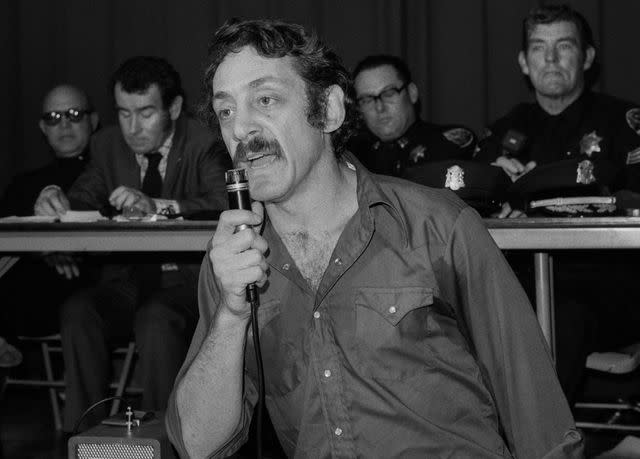
Janet Fries/Getty
Harvey Milk speaks during a Police Community Relations meeting in San Francisco, California in September 1974.Before Milk was assassinated, he recorded a message on a tape recorder, and it would be the last words he'd speak to the world. The tape was made public by his associates shortly after his death.
“This is Harvey Milk speaking on Friday, 18 November, 1978. This tape is to be played only in the event of my death by assassination," he said. “I fully realize that a person who stands for what I stand for, an activist, a gay activist, becomes the target or potential target for a person who is insecure, terrified, afraid or very disturbing."
He continued, “Knowing that I could be assassinated at any moment, at any time, I feel it’s important that some people know my thoughts, and why I did what I did. Almost everything that was done was done with an eye on the gay movement."
"All I ask is for the movement to continue, and if a bullet should enter my brain, let that bullet destroy every closet door," Milk concluded.
How did the public react to Harvey Milk’s death?
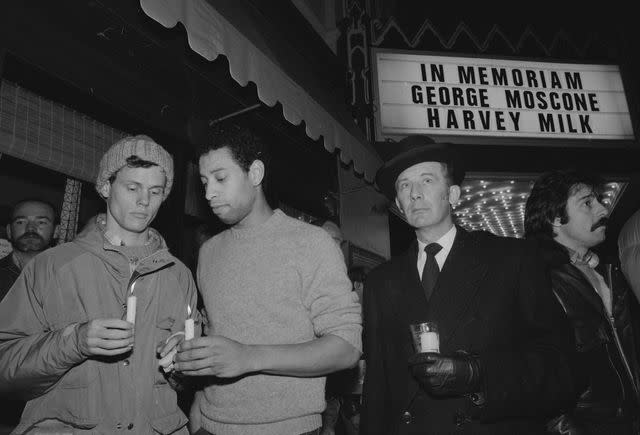
Roger Ressmeyer/CORBIS/VCG/Getty
Mourners hold a candlelight vigil for Mayor George Moscone and Harvey Milk.Following his death, the LGBTQ+ community gathered in mourning. They held a candle-lit march from Castro Street to City Hall, according to NBC News.
The march was led by Jennifer Moscone, the daughter of Mayor Moscone, and Cleve Jones, Milk's intern, who saw his body following the assassination. The reaction to his death was mostly peaceful, with the community gathering together.
However, when White was sentenced to only seven years in prison for manslaughter instead of murder, protests ensued, per History. As the crowds marched through the city, the numbers swelled from 1,500 to 5,000, and when the police arrived, they were outnumbered and retreated to City Hall.
By this time, it was 10 p.m., and protestors were breaking the building's windows, setting police cars on fire and throwing tear gas, according to The New York Times. When backup showed up, the police made numerous arrests, and over 140 injuries were reported, in addition to $250,000 worth of estimated damages. The event would later become known as the White Night Riots.
The day after the verdict was released and the riots occurred, 20,000 Milk supporters gathered again in the Castro to honor Milk's birthday. These gatherings inspired massive marches in Washington D.C. later that October, further promoting the gay rights movement.
Where is Dan White today?
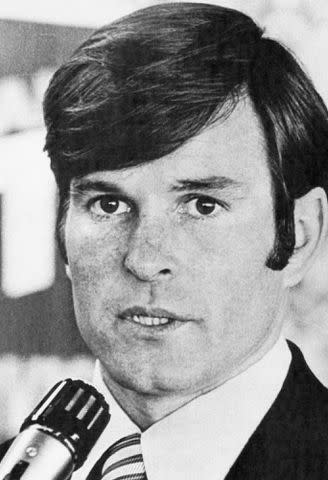
Bettmann
Dan White.After killing Milk and Moscone, White went on trial but claimed he had "diminished capacity" due to eating too many Twinkies the night before, later dubbed the "Twinkie Defense."
Psychiatrist Dr. Martin Blinder took the stand in defense of White, stating, “Whenever he felt things were not going right, he would abandon his usual program of exercise and good nutrition and start gorging himself on junk foods: Twinkies, Coca Cola,” according to court transcripts.
Blinder continued, “Mr. White has always been something of an athlete, priding himself of being physically fit. But when something would go wrong, he'd hit the high sugar stuff. He'd hit the chocolate, and the more he consumed, the worse he'd feel, and he'd respond to his ever going depression by consuming ever more junk food."
Due to the defense regarding his mental health, a jury found him guilty on the lesser charge of manslaughter, and White was sentenced to seven years and eight months in prison.
Per The New York Times, White served about five years and was released in January 1984.
When he got out, Feinstein advised White via San Francisco Police Chief Con Murphy not to return to the city, as his chances of survival “were not good,” per CBS News.
The following year, he died by suicide from carbon monoxide poisoning on Oct. 21, 1985.
What legacy did Harvey Milk leave behind?
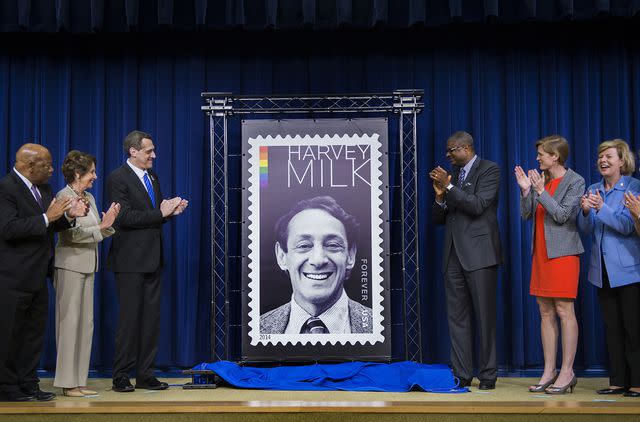
JIM WATSON/AFP/Getty
Ronald Stroman and Stuart Milk unveil the Harvey Milk Forever stamp during a ceremony in Old Executive Office Building in Washington, DC on May 22, 2014.Milk's legacy continues to be felt today: A few months before his death, he encouraged artist Gilbert Baker to create a new symbol for the gay movement, and he designed the original Pride Flag with eight colors. Today, the flag features six colors representing the diverse groups within the LGTBQ+ community.
Milk also helped pass the country's first gay rights ordinance, which prevented discrimination in housing and employment settings.
“This will be the most stringent gay rights law in the country,” he said at the time, per The New York Times. “This one has teeth; a person can go to court if his rights are violated once this is passed.”
In the years since, numerous laws and initiatives supporting the LGTBQ+ community have been enacted: The “Don’t Ask, Don’t Tell” policy was repealed in 2011, the Supreme Court made same-sex marriage legal across the U.S. in 2015, the Stonewall National Monument opened in 2016, the Respect for Marriage Act was signed in 2022.
Milk's election into San Francisco's political scene also opened doors for other queer politicians to enter the scene, per Out magazine.
Most notably, President Barack Obama awarded him with the Presidential Medal of Freedom in 2009, and a Navy ship was named after him in 2021.
"Harvey Bernard Milk dedicated his life to shattering boundaries and challenging assumptions. As one of the first openly gay elected officials in this country, he changed the landscape of opportunity for the nation's gay community," Obama said at the 2009 event.
Apart from politics, Milk's memory has been integrated into Hollywood with different projects. He was the subject of the 1984 Oscar-winning documentary The Times of Harvey Milk and the 2008 film Milk.
For more People news, make sure to sign up for our newsletter!
Read the original article on People.


